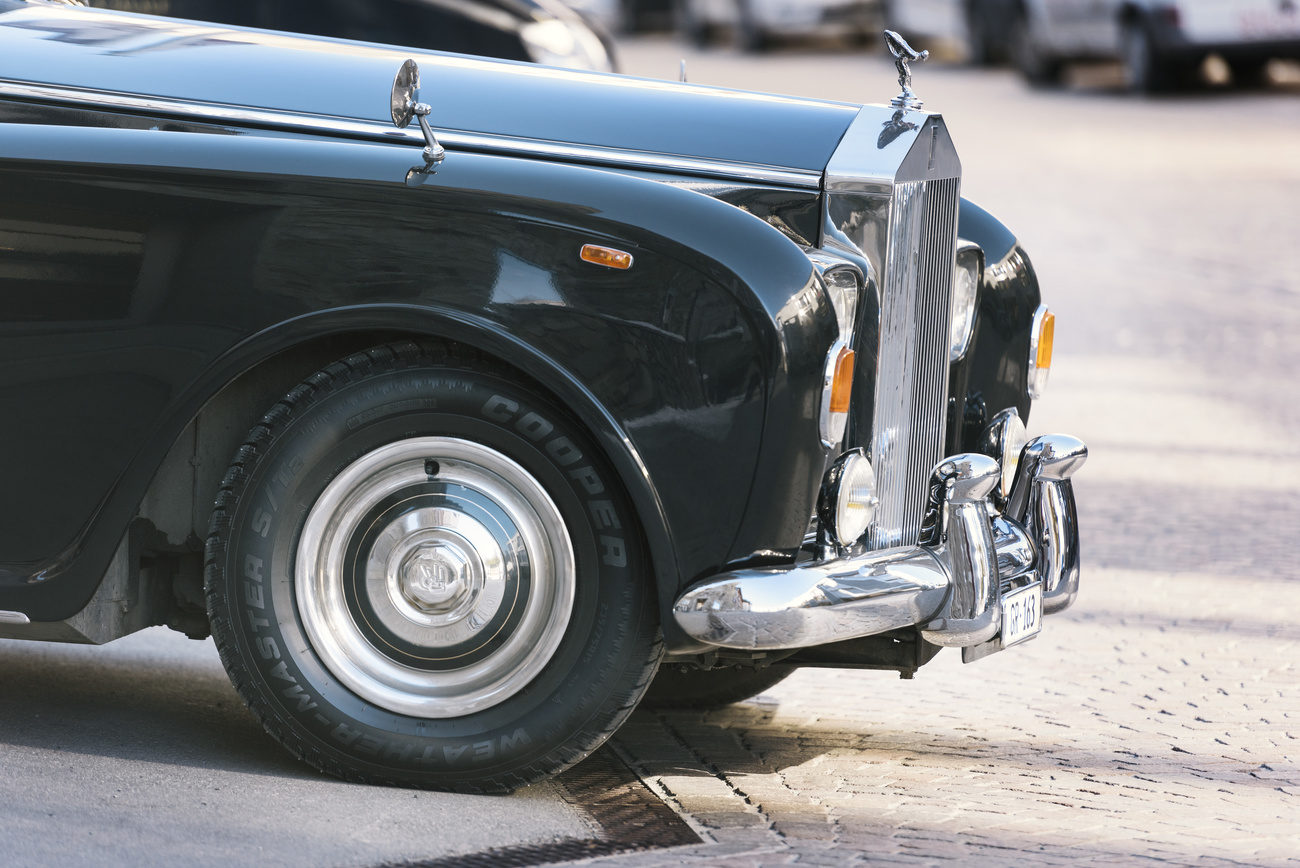Designing the future of alpine tourism

Tourism schemes of all shapes and sizes are being dreamed up to lure visitors to the Swiss Alps.
The designs range from a lowly, authentic village hotel to a restaurant tower that would increase the height of one Swiss peak.
Eleven of the projects have been featured in an exhibition at the Swiss Alpine Museum in Bern and are either in the works or already welcoming visitors.
“There are a lot of different forms of tourism in Switzerland,” Letizia Manetsch, exhibition project director at the museum, told swissinfo. “One project might work in Arosa but wouldn’t in St Moritz. We want to show the enormous variety.”
The projects are part of a movement to capitalise on growing numbers of visitors to Switzerland in recent years.
Numbers of overnight stays regressed in the 1990s and after a slight increase dipped again in 2002, in the wake of September 11, 2001. They have been on the rise since 2005 but are due to take another hit under the global financial crisis, dropping by 2.4 per cent over the 2008-2009 winter season.
The industry is now trying to predict what the future tourist will want.
“In order for tourism to reach an international audience, the products must be more attractive. The bigger the choice, the stronger the product,” Thomas Bieger, professor of tourism at St Gallen University, explains in the museum exhibition.
Tourist hub
With its SFr800 million ($690 million) budget, the redevelopment of the Andermatt resort easily outspends other major tourism projects in Switzerland.
Egyptian developer Samih Sawiris aims to turn one million square metres of former military land next to the resort into a tourist hub with 3,000 beds, a golf course and spa.
The commune lost 20 per cent of its population between 1970 and 2000 and Sawiris hopes his vision will blur the lines between tourism and village life and attract young people to the area.
Hotel construction for the project is now scheduled for spring 2009. But the size of the project remains a concern for some sceptics who are unsure of its impact on residents.
Over in Adelboden the developers of the Alpenbad wellness centre are focusing on attracting year-round health tourists in an attempt to counter industry worries over the impact of climate change on the Alps. Their SFr100 million hotel and 20 bathing pools are due to open in 2011.
Daring ideas
Other projects pivot around creating an architectural marvel that can act as a magnet to visitors.
One success story is the Tschuggen Bergoase luxury wellness centre in Arosa. The building with innovative glass wings opened in 2006 on budget and to unanimous praise.
In Davos, star Swiss architects Herzog & de Meuron were brought in to design a hotel spa tower that would add dazzle to the historic Hotel Schatzalp that is now in need of renovation. Their column was approved by the canton but the hunt is still on for an investor.
In perhaps the most daring of ideas, Heinz Julen imagined a 117-metre pyramid hotel atop the Kleine Matterhorn in Zermatt that would have raised the height of the mountain to 4,000 metres. Although his plans for a hotel were rejected, an alternative for a solar-powered restaurant at the summit will be reviewed in 2009 but is expected to be opposed by environmentalists.
At the other extreme is “gentle tourism”, which offers guests simplicity and a chance to experience nature and the culture of a local village.
Two hotels have been built with this in mind. The Piz Tschütta guesthouse was created in 2008 in a return to the early tourism roots of the village of Vnà in canton Graubünden.
The village’s 70 inhabitants all got behind the SFr2 million project which offers a welcome and cultural centre with five bedrooms and another 18 rooms in neighbouring homes.
The village of Binn’s 150 residents helped contribute to the restoration of the historic Hotel Ofenhorn. Run by the Pro Binntal Cooperative, the 125-year-old hotel was slowly refurbished when money became available and this year joined the Swiss Historic Hotel register. Work is continuing over the winter of 2008-2009.
Creativity
Other models are tapping into the budget traveller market. More than half of Swiss guests and one third of foreign guests choose to stay in hotels that cost under SFr100 a night.
The hoteliers at the forefront of this wave try to blend cheap with creativity.
The urban-style Cube in Savognin opened in 2005 at a cost of SFr15 million. It aims to offer 24-hour activities for its sleepless young guests.
Next year the striking SFr5.7 million Cabane Mont-Rose is scheduled to open on top of the Grenz glacier in Valais, catering to alpine walkers. A joint project of the Swiss Alpine Club and the Federal Institute of Technology in Zurich, it aims to merge innovation and ecological principles by being 90 per cent energy self-sufficient.
“The ideas are great but the ideas are not always new. Keep in mind that we have a very long history of tourism. Even in 1900 there were people who took a huge amount of money and built such things,” said Manetsch.
“We as a museum do not want to say that’s wrong – that’s good. We just want to present the situation. What you think about the individual projects is up to you.”
swissinfo, Jessica Dacey
Vacancies: Alpine Hotels from Decline to Renewal runs until August 16, 2009 at the Swiss Alpine Museum in Bern.
It showcases 11 recent alpine hotel projects ranging from the simple to the extravagant that aim to breathe new life into tourism. A number of locations are turning to grand designs to assure their future, while others prefer to make use of existing infrastructure.
The exhibition focuses on the big-budget projects, the architectural feats, the traditional and authentic, and the affordable.
On show at the Swiss Alpine Museum alongside the crop of new designs are those that don’t make it past the drawing board. They include:
Stilli Park, Davos – SFr120 million plans for a luxury wellness hotel, designed by Matteo Thun, are being revised after some opposition.
Klosters – A SFr50 million holiday village with 600 beds, planned by the Dutch-German Landal Green Parks, is awaiting permission for change of use in the area.
Castle Radons, Savognin – The Savognin Bergbahnen has plans for hotels and apartments offering up to 1,700 beds, but the local authorities refused to change the land use in 2007 and the planners are looking to build elsewhere.
Prätschli resort, Arosa – A SFr50 million, 400-bed hotel planned by the German firm Arkona, was accepted by the authorities but has met resistance for environmentalists.
Maloja Palace, Maloja – The SFr40 million refurbishment of the 1884 Maloja Palace Hotel into a luxury hotel and apartments has met with problems posed by secondary home owners.
Vallée de Conches – Wolf Tilman came up with plans for a new resort in reaction to the revamp of Andermatt. The idea is now being reviewed by authorities.
Mayens de Bruson – SFr250 million chalet village with 2,000 beds proposed by Canadian firm Intrawest has met opposition by WWF.

In compliance with the JTI standards
More: SWI swissinfo.ch certified by the Journalism Trust Initiative













You can find an overview of ongoing debates with our journalists here . Please join us!
If you want to start a conversation about a topic raised in this article or want to report factual errors, email us at english@swissinfo.ch.